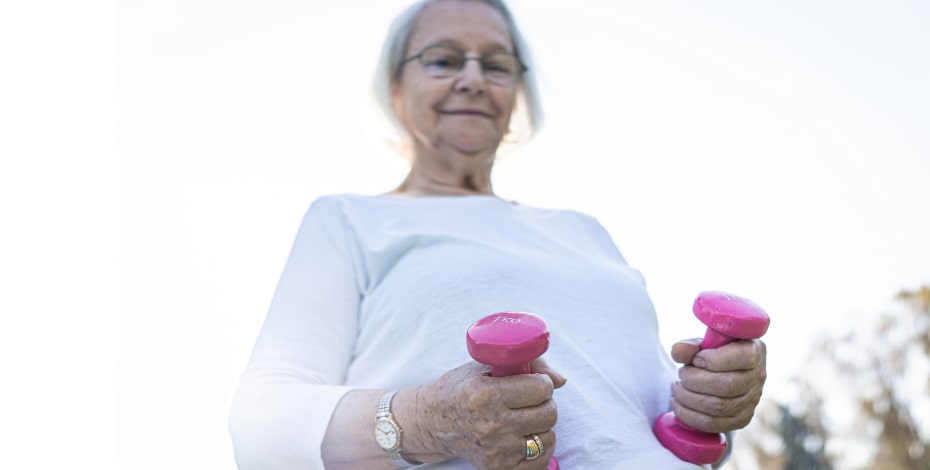
Cost-effectiveness of exercise training for chronic obstructive pulmonary disease

Increasing physical activity is likely to be cost-effective in treating people with chronic obstructive pulmonary disease. Q&A with Glenn Leemans.
Your systematic review examined the cost-effectiveness of respiratory physiotherapy interventions for people with chronic obstructive pulmonary disease (COPD). Why did you decide to tackle this topic?
Being interested in new medical technologies, I am investigating in my PhD at the University of Antwerp both the efficacy and the implementation in healthcare of medical devices used as an aid in airway clearance techniques.
However, as we are living in an increasingly cost-conscious environment, respiratory physiotherapy interventions are evaluated by decision-makers in terms of cost and benefits before implementation and reimbursement by health authorities.
While pulmonary rehabilitation is considered to be one of the most cost-effective therapies for individuals with COPD, further research in terms of costs per disease-specific quality of life and costs per quality-adjusted life-years (QALYs) gained by pulmonary rehabilitation or other respiratory interventions, such as medical devices for airway clearance techniques, is needed to reach definite conclusions.
Therefore, the goal of our interdisciplinary team—physiotherapist Professor Dirk Vissers, general practitioner Professor Paul Van Royen and health economist Professor Jan Taeymans—was to carry out a critical appraisal and synthesis of health economic evaluations in the current literature.
How much evidence did you find?
After removing 100 duplicates, our systematic search strategy across several medical databases yielded 435 records, from which 59 articles were identified to review for eligibility.
These were obtained in full text and assessed, resulting in 11 studies in this review.
A complete overview of the search methodology is presented in the paper.
What interventions did you find cost-effectiveness data for?
The reported interventions were eight studies on pulmonary rehabilitation programs, one on airway clearance techniques, one on an integrated disease management program and one study on the effect of early assisted discharge by nurses compared with usual care, including inpatient physiotherapy interventions.
As expected, these interventions had multiple components that differed significantly in content, timing and organisational aspects.
The current harmonised European Respiratory Society curriculum for respiratory physiotherapy was used as a framework to provide a detailed descriptive analysis of all the respiratory physiotherapy skills used in these multi-component interventions.
We observed that 82 per cent of the interventions were exercise training in combination with enhancing physical activity levels.

Glenn Leemans's research examines the cost-effectiveness of exercise in treating chronic obstructive pulmonary disease.
The minority of the interventions were airway clearance techniques, respiratory muscle training, breathing strategies and techniques for lung expansion.
Were these interventions cost-effective?
Regardless of the economic perspectives, this systematic review showed that 67 per cent of all quality-of-life-related incremental cost-effectiveness ratios (ICERs) were situated in the north-east or south-east quadrants of the cost-effectiveness plane.
Moreover, 71 per cent of all QALYs were also located in these quadrants.
ICERs in the south-east quadrant indicate that the intervention compared to the alternative is more effective and less expensive.
At the same time, ICERs in the north-east quadrant of the plane show more effective but more expensive interventions than the alternative.
In this situation, the cost-effectiveness depends on the willingness to pay, which is defined as the maximum amount of money an individual is willing to pay to avoid or reduce a specific health problem or gain a specific health benefit.
Many countries today are still using cost-effectiveness thresholds within the World Health Organization guidelines of one to three times the gross domestic product per capita, resulting in an average willingness to pay US$77,509.37 per QALY.
Comparing the reported ICERs in our systematic review with this specified cost-effectiveness threshold, six studies could be seen as cost-effective in cost per QALY when offering respiratory physiotherapy interventions focusing on exercise training combined with enhancing physical activity levels.
Are there still areas where we are unsure and need further research?
Despite these results, there is still uncertainty on various estimates of cost-effectiveness.
For example, the complex and heterogeneous nature of COPD affects the general applicability of our results.
Selecting better defined subgroups in the future could potentially help.
Furthermore, the reported content, timing and organisational aspects differed significantly between all evaluated interventions, limiting comparison.
In the end, to reach definite conclusions, we recommend more studies investigating the cost-effectiveness of respiratory physiotherapy interventions alongside an adequately designed long-term clinical study with outcomes in terms of costs per QALY gained from a societal perspective.
>> Glenn Leemans is a respiratory physiotherapist interested in airway clearance techniques in chronic respiratory patients. He combines his PhD with consultancy activities where he helps medical device companies find the best regulatory strategy to provide patients with safe and high-performing medical devices.
© Copyright 2025 by Australian Physiotherapy Association. All rights reserved.





